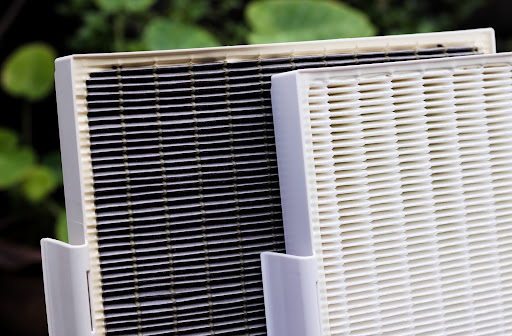Furnace filters play a vital role in keeping your heating system operational throughout the year, but how much do you really know about your filter? ...
Furnace filters play a vital role in keeping your heating system operational throughout the year, but how much do you really know about your filter? If you can’t tell the difference between a pleated cotton furnace filter and a polyester one, you might need a crash course in filter studies.
Fortunately, the folks at Action Furnace are here to help. We’ve spent many years working with heating systems throughout Calgary, Edmonton, and Red Deer, so we know all there is to know about furnace filters and we’re ready to answer your burning questions.
The Importance of Furnace Tune-Ups
Before we get into the nitty-gritty of furnace filters, it’s important to note that if you want your furnace running its best throughout the year, you should schedule annual furnace tune-ups with Action Furnace.
During a furnace tune-up, our team will replace your furnace filter and perform small maintenance repairs. Not only does our supremely detailed inspection process ensure your furnace is running safely and efficiently, but we will also provide club members with a year’s supply of furnace filters. With our help, you can keep dust from impacting your furnace’s components and affecting your air quality.
What Does a Furnace Filter Do?
Furnace filters remove various particles from the air before they enter your heating system through the return ducts. Removing these particles helps protect sensitive components in your furnace (such as the blower fan) and improves your indoor air quality. Furnace filters can protect your furnace from the following substances:
- Dust
- Pollen
- Pet hair or dander
- Smoke and fumes
- Mould spores and mildew
- Bacteria
- Viruses
MERV Ratings
One handy tool you can use to assess a potential filter’s effectiveness is its MERV rating. MERV ratings exist on a scale from 1-16. Essentially, the higher a filter’s MERV rating, the smaller the particles it can catch.
You may not need to buy filters with the highest possible MERV rating you can find, but filters with a high MERV rating offer several advantages over their less effective counterparts. Putting filters with high MERV ratings in your furnace can help you by:
- Reducing allergy symptoms for people in your building.
- Protecting people in your building who have autoimmune diseases from bacteria and viruses.
- Noticeably improving the air quality in your home.
What Are the Different Types of Furnace Filters?
While there are various furnace filters to choose from, Action Furnace is committed to providing only the best for your home.
During your annual furnace tune-up, club members will receive a replacement of your old filter and a year’s supply to help keep your furnace running efficiently. However, if you’re keen on finding replacement furnace filters on your own, some of the filters you might find at your local hardware store include:
Disposable Filters
These cheap filters are typically made of fibreglass but may sometimes be made of synthetic fibres instead. Disposable filters usually only catch approximately 20% of particles between 3-10 microns in size. As such, their MERV rating tends to be between 2-3—much lower than most other commercially available furnace filters.
Disposable Pleated Filters
Some disposable filters have more robust construction, with a cardboard frame and a wavy design that increases their surface area to collect more particles. These pleated filters may also be packed with a cotton-polyester blend to increase their density and prevent smaller particles from passing through them. Standard quality pleated filters often have a MERV rating of around 8, which allows them to catch 84.9% of particles between 3 and 10 microns large.
Disposable Pleated High-MERV Filters
Some high-quality disposable pleated filters have MERV ratings as high as 13. These filters are designated as “high-MERV” filters and are over 90% efficient at catching particles between 3-10 microns. High-MERV filters can also remove more than 80% of particles between 1-3 microns from the air, making the air inside a building noticeably cleaner.
Electrostatic Filters
These filters come in both disposable and reusable varieties, but the concept behind each is the same. Electrostatic filters have two sections: a fine mesh of slightly charged wires and earthed rods that ionize particles as they pass through it, and a series of plates with a negative charge between them, which attract the ionized particles like a magnet and collect them like flypaper.
Electrostatic filters vary widely in terms of their MERV ratings, with some disposable versions rated as low as 2 and some reusable versions as high as 10. A reusable electrostatic filter with a MERV rating of 10 can catch 85% of particles between 3-10 microns and up to 64.9% of particles between 1-3 microns. Reusable electrostatic filters also tend to last longer than most other filters (but you’ll have to wash them periodically to prevent mould or mildew from forming on them).

HEPA Filters
HEPA (high-efficiency particulate air) filters are dense and packed with a web of fibres, leaving a meshwork of tiny gaps to let air flow. As air passes through the HEPA filter, these fibres trap particles both large and small.
HEPA filters are so efficient that NASA uses them to purify the air in spacecraft cabins. They can trap 99.97% of particles as small as 0.3 microns and are even more efficient at catching larger particles.
Some homeowners worry that putting HEPA filters in their furnaces will reduce the airflow in their forced-air systems and lower their overall efficiency. This effect is called a pressure drop. However, HEPA filter designs are perfectly safe for your home and furnace, as technological advances have allowed furnaces to remain energy efficient when using modern HEPA filters without impacting airflow.
What Size of Furnace Filter Do I Need?
No matter what kind of furnace filter you choose for your heating system, you’ll need to make sure it fits. Most furnaces require a filter with one of the following dimensions:
- 16 x 25 x 1 inches
- 20 x 25 x 1inches
However, older or less-common furnaces may need filters with different dimensions. To find out what size of filter your furnace needs, simply look at the inside of the door on the furnace’s filter cabinet. A label there should tell you the exact dimensions of the filter you need.
In some cases, you may need to talk to one of our experts to find the right furnace filter size for you.
How Do I Replace a Furnace Filter?
Furnace filters should be replaced every 90 days and can easily be done by following these simple steps:
- Turn your furnace off.
- Find your furnace’s filter cabinet. In most homes, you will be able to find the furnace filter cabinet between the return air duct and the blower motor chamber at the bottom of your furnace.
- Slide the existing filter out of place. If the filter is reusable, wash it in warm running water and rub it gently with a cloth or brush to remove material collected on the surface. If the filter is disposable, throw it in the trash. Please note that you cannot recycle filters made with polyester or fibreglass.
- Slide in the new (or clean filter). Ensure it fits properly and does not leave gaps around the edges through which unfiltered air could pass into the system.
- Close the filter cabinet and turn your furnace back on.
Taking Care of Your Furnace Means Taking Care of Your Filters
It may be easy to forget about furnace filters, but they’re critical for maintaining your furnace and its efficiency. To make sure your furnace is running smoothly throughout the heating season, please contact our friendly customer service representatives and schedule your annual furnace tune-up.



